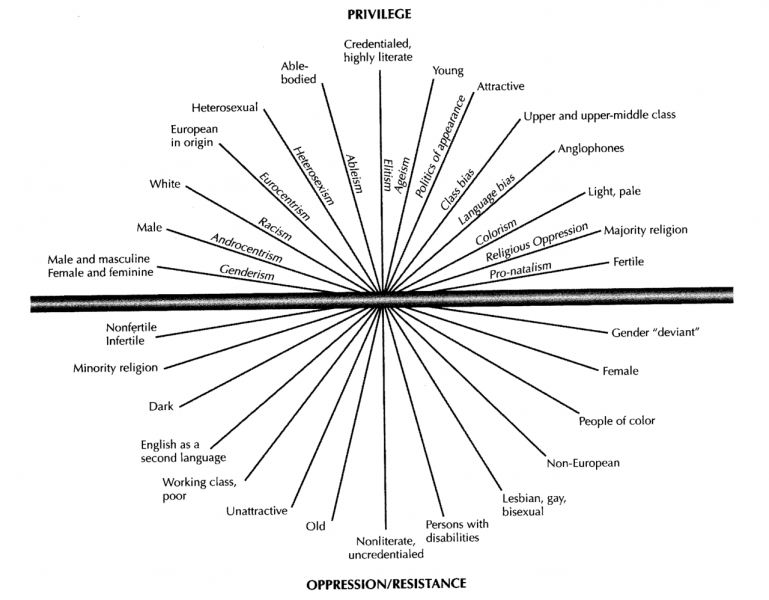Anti-Transphobia
Anti-transphobia being reductionist is the opposition to the collection of ideas and phenomena that encompass a range of negative attitudes, feelings or actions towards transgender people or transness in general. Transphobia can include fear, aversion, hatred, violence, anger, or discomfort felt or expressed towards people who do not conform to social gender expectations. It is often expressed alongside homophobic views and hence is often considered an aspect of homophobia.
It's yet another clear case of privileged people oppressing even further already oppressed collectives. We can clearly see it if we use the ever useful Kimberlé Williams Crenshaw intersectionality theory diagram.
TERF⚑
TERF is an acronym for trans-exclusionary radical feminist. The term originally applied to the minority of feminists that expressed transphobic sentiments such as the rejection of the assertion that trans women are women, the exclusion of trans women from women's spaces, and opposition to transgender rights legislation. The meaning has since expanded to refer more broadly to people with trans-exclusionary views who may have no involvement with radical feminism.
Arguments against theories that deny the reality of trans people⚑
This section is a direct translation from Alana Portero's text called Definitions.
Sex is a medical category and gender a social category⚑
Sex is a medical category, it's not a biological one. According to body features like the chromosome structure and genitalia appearance, medicine assigns the sex (hence gender) to the bodies. In the case of intersexual people, they are usually mutilated and hormonated so that their bodies fit into one of the two options contemplated by the medicine.
Gender is the term we use to refer to how a person feels about themselves as a boy/man, a girl/woman or non-binary.
Since birth, we're told what's appropriate (and what isn't) for each gender. These are the gender roles. It's not the same gender than gender role: the gender determines how you interact with the other roles. For example, a woman can take traditionally understood male roles gender roles, that doesn't mean that she is or isn't a woman.
The problem arises when these two oppressions are mixed up: cissexism (the believe that bodies have an immutable gender defined by the sex assigned at birth) and misogyny (the base of feminine oppression). When you mixing them up you get the idea that the trans movement erases the feminine structural oppression, when in reality, it broadens the scope and makes it more precise, as they suffer the same misogyny than the cis women.
Women are killed for being women. They are socially assigned the responsibility for care, they are prevented from having individual will and they are deterred from accessing resources. This structural violence is suffered by all women regardless of the sex assigned at birth.
Questioning the adjudication of gender to the bodies and questioning the roles assigned to the genders are complementary paths for the feminism liberation.
Avoid the interested manipulation of the sexual or gender identity⚑
The sexual or gender identity determines whether there is correspondence with the gender assigned at birth. When there isn't, it concerns a trans person.
The sex and gender terms represent the same reality, being sex the medical term, and gender the academic one. Equally transexual and transgender represent the same reality, although these last have a pathologizing undertone, the term trans is preferred.
Avoid the fears of letting trans people be⚑
Some are afraid that the trans women negatively affect the statistics of unemployment, laboral inequality, feminization of the poverty and machist violence, and they contradict the problems of the cis women.
Trans people usually have a greater unemployment rate (85% in Spain), so the glass ceiling is not yet even a concern, and they are also greatly affected by machist violence.
The queer theory doesn't erase or blur women as a political subject. Thinking that it risks the rights and achievements earned through the feminist movement shows a complete misunderstanding of the theory.
Women are not an entity⚑
Women are not an entity, they are a group of people that are placed below men in the social scale, each with her own unique experience. The woman identity belongs to any person that identifies herself with it.
The fight against discrimination and towards inclusion politics should be mandatory for all society, and shouldn't be used against the trans people.
